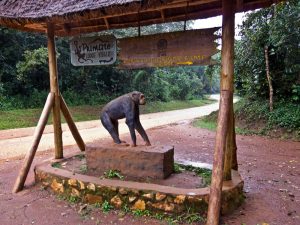Preserving Biodiversity: Maasai Ngorongoro Conservation Area
Overview of Maasai Ngorongoro Conservation Area
The Maasai Ngorongoro Conservation Area, located in Tanzania, is a UNESCO World Heritage Site that spans over 8,000 square kilometers. It is home to a diverse range of flora and fauna, including the iconic Maasai people who have coexisted with wildlife in this region for centuries. The area is known for its stunning landscapes, including the Ngorongoro Crater, which is the world’s largest intact caldera and a haven for wildlife.
Managed by the Ngorongoro Conservation Area Authority, the Maasai Ngorongoro Conservation Area is a prime example of successful conservation efforts that aim to preserve biodiversity while also supporting the livelihoods of the local Maasai community. The area is rich in wildlife, with populations of lions, elephants, rhinos, and wildebeests, among many others.
Strategies for Preserving Biodiversity in the Region
1. Community-Based Conservation
One of the key strategies for preserving biodiversity in the Maasai Ngorongoro Conservation Area is through community-based conservation initiatives. The Maasai people have been stewards of the land for generations, and their traditional knowledge and practices play a vital role in maintaining the delicate balance of the ecosystem. By involving the local community in conservation efforts, such as wildlife monitoring and habitat restoration, the Ngorongoro Conservation Area Authority ensures that the Maasai people have a stake in the protection of their natural heritage.
2. Sustainable Tourism
Sustainable tourism is another essential aspect of preserving biodiversity in the Maasai Ngorongoro Conservation Area. Sunset Africa Safari, a responsible tour operator, offers guided tours of the region that not only showcase the incredible wildlife and landscapes but also support local communities and conservation efforts. By choosing eco-friendly accommodations, minimizing the impact on the environment, and respecting wildlife viewing guidelines, tourists can contribute to the preservation of biodiversity in the area.
3. Anti-Poaching Measures
Poaching is a major threat to biodiversity in the Maasai Ngorongoro Conservation Area, particularly for endangered species such as the black rhino. To combat this illegal activity, the Ngorongoro Conservation Area Authority employs anti-poaching teams that patrol the area and work closely with local law enforcement agencies. By enforcing strict anti-poaching measures and raising awareness about the importance of protecting wildlife, the conservation authority plays a crucial role in ensuring the survival of endangered species in the region.
In conclusion, the Maasai Ngorongoro Conservation Area is a shining example of successful biodiversity conservation efforts that prioritize the well-being of both wildlife and local communities. By implementing strategies such as community-based conservation, sustainable tourism, and anti-poaching measures, the Ngorongoro Conservation Area Authority is able to preserve the rich biodiversity of this unique ecosystem for future generations to enjoy. For those interested in experiencing the wonders of the Maasai Ngorongoro Conservation Area, Sunset Africa Safari offers guided tours that not only provide an unforgettable wildlife experience but also support the conservation of this precious natural heritage. To book a tour, clients can contact info@sunsetafricasafari.com.


